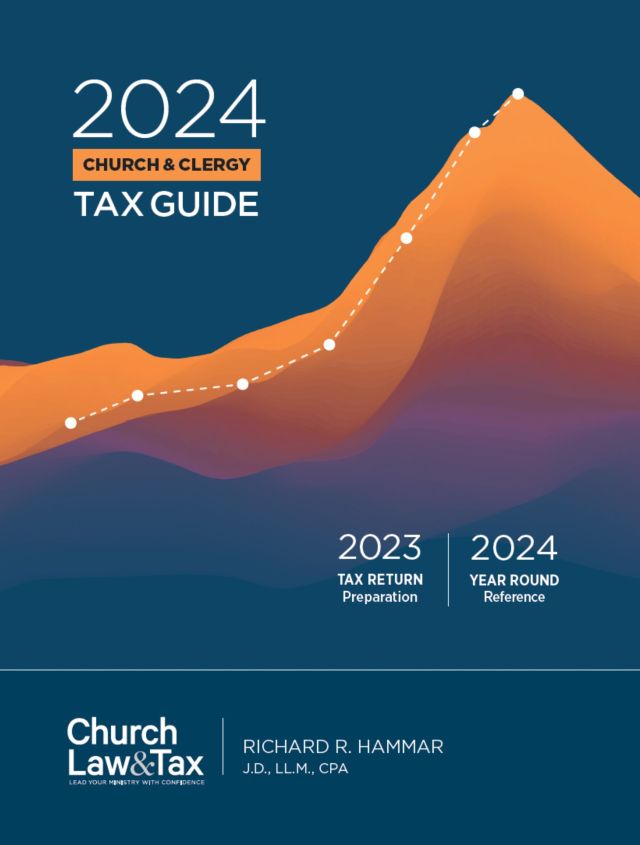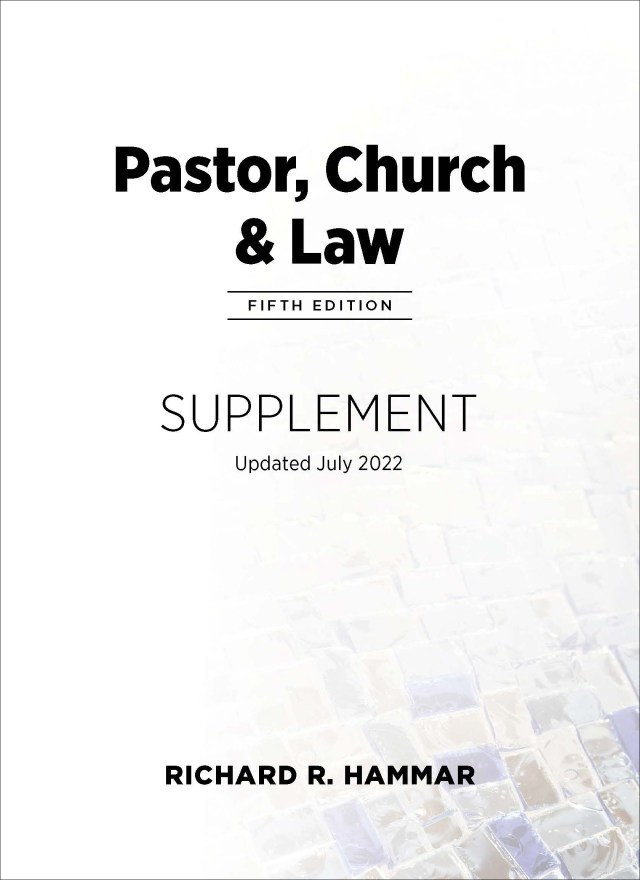When I left the corporate world to take a position on the staff of my church, I didn’t leave my briefcase behind. Instead, I brought a wealth of experience that I was certain would benefit any church. But as many of you already know, congregational leadership is complex, and the skills from the secular arena are not plug-and-play when we arrive in the sacred realm.
One of my favorite business “best practices” is a concept from Jim Collins’ Good to Great: We need to “get the right people on the bus and the wrong people off the bus.” In essence, Collins says that getting the right leadership team should be a top priority for any organization, and that the right strategy and success will flow from this strategy. Indeed, many churches are crippled because they have the wrong people on the bus. Perhaps you’re dealing with a dearly loved, but under-performing, staff member, or a star performer who is not a team player. Then you know firsthand that “getting the right people on the bus”—and many other business ideas—is easier said than done.
I recently listened as a human resources expert advised a group of executive pastors against becoming entangled in the lives of their employees. In essence, she said that we should deal with performance issues in a detached manner because you can’t be pastor and manager at the same time. But is that true? Is that how our churches are supposed to function? For multi-staff churches, personnel policies and staff management may be the area where leading business practices are most needed. This also may be the area where these practices are most difficult to apply and require the most nuanced approach.
So how should we adapt best practices when we’re hiring, evaluating, or terminating staff?
Hiring Practices
One church announced plans to launch a major initiative at the start of the year and to add a staff position to lead it. A former member, who had spent several years with a parachurch ministry in another city, was moving back to the area and was available. Was this God’s unexpected way of meeting the church’s needs? With an incomplete job description and a superficial interview, the former member was brought on board for this vital role. During the next few years, when her performance fell short of expectations, few people reflected on the flawed hiring process that started it all.
Churches are notorious for hiring mistakes like this. Sometimes they’re “forced” to hire an unqualified member or the relative of a major donor, and other times they justify the process because “we can’t get good candidates at this salary.” Sometimes their practices are simply sloppy. What can churches learn from business if they want to get the right people on the bus?
- Define the role. It’s virtually impossible to hire the right person if you’re not clear what he or she will be doing. Spend time developing a thorough job description that includes the duties and necessary attributes. Good sources of input may be the person who is currently in the role or another church with a similar position. A clear job description is also an important tool for communicating with candidates, helping to prevent the “I didn’t know I was expected to do that” syndrome.
- Ask the right questions. In-person, in-depth interviews are the best way to evaluate candidates. Don’t treat the interview as a formality or feel that you can’t ask pointed questions. Spend the time to form questions that allow you to evaluate their capabilities and their fit. A minimum of two interviews (with different people) should be required for any position. For key roles, a full day of interaction involving staff and key lay leaders is appropriate. Ultimately, we’re doing a favor to the church and the candidate if we avoid a hiring mistake through a set of rigorous interviews.
- Dig deep. It’s not easy to get an unfiltered reference, but don’t skip this step. If the candidate is coming from another church, the reference may suffer from “chronic niceness.” Be prepared to ask specific questions:
- How many people did she manage?
- Did he work well without close supervision?
- How did she handle a stressful situation?
As they answer, listen closely for the nuances. And listen for what is not being said. Don’t be afraid to ask my favorites:
As much as we might be able to learn from business, we must also recognize the unique dynamics in a church. For example, job descriptions are important, but they need to be flexible because of the congregation’s changing needs and because we’re looking for people to wear more than one hat.
In addition, the business model focuses heavily on competence, but as Willow Creek Community Church’s senior pastor Bill Hybels points out, this is only of the three C’s for successful hiring. The other two-character and chemistry—are harder to assess but no less important.
Ultimately, the hiring process should be a prayerful one, and if you have a check in your spirit about a candidate, it’s time to put on the brakes. After all, the person you hire for any position is more than an employee; he or she will become a co-laborer in ministry and a part of your faith community.
Performance Evaluations
In theory, the annual salary increases for one church’s staff were confidential, but in reality, the percentage increases always manage to leak out. One staff member, whose performance had been marginal for several years, received a 3 percent raise, which was on the low end of the range. In his review, he was told that he had improved in several areas over the past year and to keep up the good work. A second person received the 5 percent “star performer” increase. “You’ve done a great job again this year. Keep up the good work,” she was told.
Can anything fruitful result from this type of approach? Does the annual review have to be like a trip to the dentist, in which the patient hopes to get in and out as quickly as possible without any bad news and with no expectation of anything positive? In the best churches and businesses, the annual review is seen as one tool in an overall staff development process, just as a trip to the dentist is one part of a comprehensive oral hygiene program. Other tools in the development process include goal setting, informal feedback, career planning, and training. Let’s focus on the ingredients for an effective performance review.
- Avoid surprises. Is it feasible for every appraisal, good or bad, to end with the staff member saying, “That’s how I see it, too”? This is a powerful target for supervisors because it forces them to be clear about expectations and performance criteria throughout the year and to give ongoing, informal feedback to their staff. Consider the flip side: when a staff member receives a surprising negative review, they’ll often say, “If I had known this was a concern, I would have tried to correct it.” The implication is that the church may have unnecessarily lived with mediocre results for months.
- Engage in dialogue, not monologue. It’s amazing how the dynamic changes if the performance evaluation is a dialogue. Start by asking the employee to come to the meeting prepared with a completed self-assessment based on the established criteria. The manager and employee then can go through these criteria, each sharing their observations. There will often be significant agreement on positive and negative points. When disagreement arises, it’s a perfect opportunity for the boss to ask, “Why did you rate yourself that way? Tell me a little more.” Even if the manager doesn’t gain new insights, a constructive tone has been established that makes the review more productive.
- Be clear and honest. Every person deserves to know how their performance is viewed. You may avoid an unpleasant conversation by sugar-coating the truth, but you’re not helping your congregation or the staff member. Tell them where they are succeeding and where they are falling short. Be prepared to give specific examples and suggest alternate ways they could have handled a situation. Better for them to be discouraged and clear, than totally confused about where they stand.
- Look to the future. If a performance evaluation is to be a development tool, then it ultimately must be directed toward future results. A review of the past year may justify a compensation decision, but it is most helpful for guiding future behavior. Any staff member should walk away from a performance evaluation with two or three concrete things to work on improving. The written record (yes, it should be documented) of the evaluation and the next steps will be a valuable component of future appraisals.
While this sounds very straightforward, it is not easy to put in to practice in a church. The challenge begins as soon as you try to measure something as elusive and subjective as ministry effectiveness. We often lack comparisons or standards for evaluation. While a company might have 100 customer service representatives, a church only has one music minister. Extraneous factors only compound the problem. Managers in business might not even know of an employee’s personal problems (illness, family, financial) and they don’t have to make special allowances if they do know. In our churches, something is wrong if we don’t know about—and show grace—when these personal issues arise.
Terminating Staff
Few people in the church disagreed that the youth director’s performance was unsatisfactory. He had a small handful of supporters, but outside of that was a much larger circle of disgruntled parents, teens, volunteers, and key lay leaders. His caustic attitude also alienated most of the staff, including the senior pastor. As the situation deteriorated, the personnel committee got involved and decided that the youth director should be given two months to make significant improvements. When the time period expired, all agreed that his improvement was marginal at best, but rather than authorize his termination, they decided to give him one more chance. They chose a “compassionate” course of action, but they failed to recognize the damage to the church and the drain on staff morale from their indecision.
Horror stories from church staff terminations abound, both the mishandled and the never handled. While businesses make mistakes as well, the risk of lawsuits has forced most to develop clear guidelines for those difficult cases when it’s necessary to fire someone.
- Establish a transparent process. The best HR systems have clear processes for handling terminations. They spell out the conditions that can result in immediate termination, and they describe a probationary process for dealing with all other problems. In the latter case, when performance is grounds for termination, the employee is confronted with the specific concern(s) and is given a defined amount of time to correct the deficiency. During the remedial period, the supervisor closely monitors performance, getting input from others and giving informal feedback to the employee. At the end of the period, the employee is told if adequate progress has been made. If it has not, then the person is released (or occasionally the probationary period is extended). This process may seem too formal, but it’s the fairest way to deal with something as important as a person’s livelihood.
- Know the law. You can make a bad situation worse if you unintentionally violate a law when firing someone. Given the complex web of state and federal employment statutes, it’s best to consult with an HR professional or an attorney for advice on termination issues. Contracts (written or verbal), right-to-work, wrongful discharge, and discrimination are some of the issues that may arise. This may take extra time and cost, but the protection for the church is worth it.
- Define the severance package. Before an employee is notified of a termination, the employer should determine the details of a severance package. This will typically include some compensation, which is normally a certain number of weeks of salary plus payment for unused vacation. It should also include an option to continue medical insurance (normally at the employee’s expense) and may also include some assistance for them in finding a new job (for example, an outplacement service). Some organizations will have a legal agreement in which the employee’s acceptance of the severance package is conditional upon their agreement not to take legal action or talk to others about the circumstances of the termination.
- Don’t confuse payroll and benevolence. Sometimes we don’t terminate someone because they “need the job.” In other words, we know their performance is unacceptable, but we want to be charitable. Consider using benevolence funds (and a generous separation package) for charity, not ongoing salary dollars. Sometimes we know of external factors (such as health or marital problems) that underlie performance shortfalls. The probationary period described above can be adjusted to reflect these issues. This acknowledges the problem and offers a compassionate solution for a defined time period.
In the best of circumstances, terminations are unpleasant, and most congregations don’t operate under the best of circumstances. The most challenging aspect of firing church staff is the connections that they form throughout the congregation. Even in cases where it is clear that someone needs to leave, there will be at least a handful of supporters. If those supporters are vocal or well-connected or large contributors, things can get messy in a hurry. That is why it is essential that churches follow a process that is fair and defensible, not one that is arbitrary or vindictive. That is also why it is helpful to involve the appropriate lay leadership (including a personnel committee, the elder board, and so on) in these issues. If they understand and support the decision to terminate, they can be a buffer for the senior or executive pastor when the heat is on.
There are plenty of reasons to proceed with caution, but that doesn’t mean that we should back down from making the hard calls. Too often a church will hang on to an under-performer because it doesn’t want to stir things up. If the leaders could see the full cost of this decision, they might decide that a little pain in the short-term would lead to much greater results in the long-run.
Doing Right
A recent edition of the “Defining Moments” audio journal described the staff downsizing at Willow Creek Community Church after the 2008 economic downturn. Leaders went through a rigorous, business-like process to identify the positions that would be eliminated because they had to reduce their budget and wanted their resources aligned around their highest priorities. Then the church put together comprehensive and costly plans, including generous severance packages, career counseling, and ways to maintain dignity, for all who were losing their jobs.
When asked why they spent so much in a time of financial stress, Bill Hybels responded, “Because we’re a community.” He went on to say that it was important to show “the dignity of employment at our church and how we care about our people,” and concluded by simply saying, “It was the right thing to do.”
That’s the tension we all live with in every aspect of HR—doing the right thing for employees and for the church.




